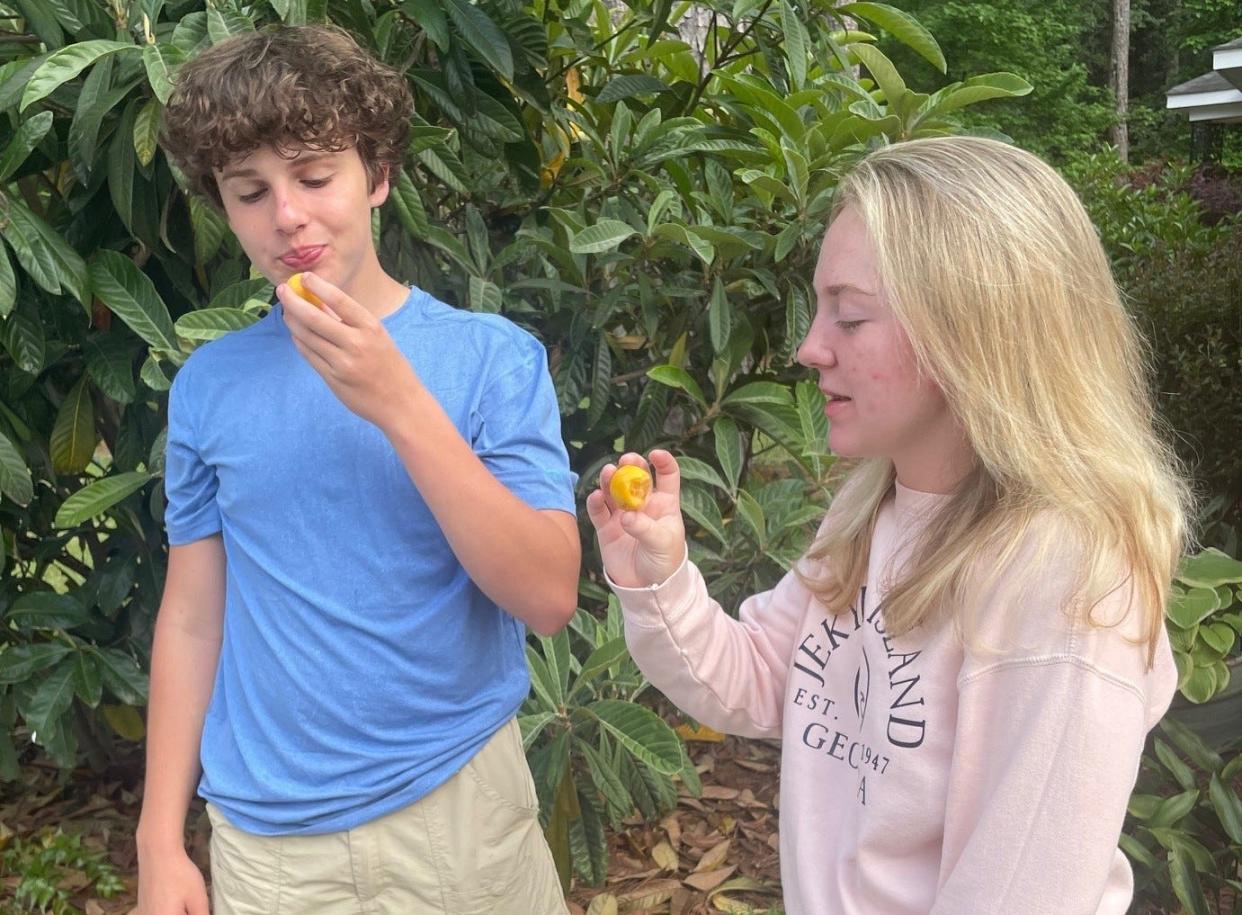Campbell Vaughn: Loquat is a great addition to any landscape with bonus of good-tasting berries

Have you seen the trees around town that have large leaves similar to a magnolia and have clusters of large yellow berries? Loquat (Eriobotrya japonica) is the name, and the yellow berries are actually a delicious fruit.
Sometimes called a Japanese Plum, this tree does well in our region and is a great addition to your landscape.
Native to China, the loquat tree is an evergreen with large, stiff leaves. Growing alone in the open, the tree is very symmetrical with a compact dense crown.
This fast grower can attain a height of 25 feet and a spread of 15 to 20 feet. The leaves are glossy, dark green above and with a fuzzy underneath. These characteristics of the tree have made the loquat an excellent specimen or accent in the home landscape. One of the best specimens around Augusta that seems to always be loaded with fruit is the loquat on the south side of Shepheard Blood Center on Wrightsboro Road near the Big Solo Cup.

The mature loquat tree can withstand temperatures of 10 degrees without serious injury, but both flowers and fruit are killed at temperatures below about 27. Unfortunately, loquat blooms in late fall to early winter and must mature its fruit during the winter months.
This year in the Augusta area we are having a bumper crop.
The fruits are the sweetest when soft and orange. The flavor is a mixture of peach, citrus and mild mango. I gave my kids some a week ago and then there wasn’t a fruit left on the tree after they started.
I love the tree as an alternative for a magnolia because of its speed of growth. If you want it for fruit production, make sure to plant the loquat on the south or southeast side of the residence to obtain maximum cold protection.
Campbell Vaughn: Asian ambrosia beetles are the death of any infested plants
Loquat is usually available in containers at select nurseries. Dig a wide hole, plant about an inch high and taper the dirt to makes sure all exposed roots are covered. Be careful not to leave dirt on the base of the tree. Water thoroughly at planting and again every three or four days for the first week. Afterwards, lengthen the interval between waterings over the next several months until the tree is well established. Fertilize only after new growth commences.
With adequate space, loquat trees normally do not require pruning and is also mostly free of natural pests. The Japanese plum should begin to bear in two to three years, with a well-developed older tree easily producing 100 pounds of fruit.
The fruit can be eaten fresh from the tree or frozen intact for later use. It also can be made into excellent jelly, jam, preserves, cobbler or pies. If you invite my son over to play, don’t plan on having many left over to enjoy.
This article originally appeared on Augusta Chronicle: Campbell Vaughn: Loquat is a great addition to any landscape
